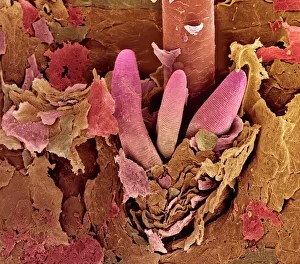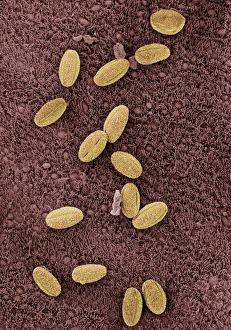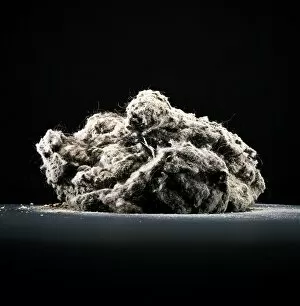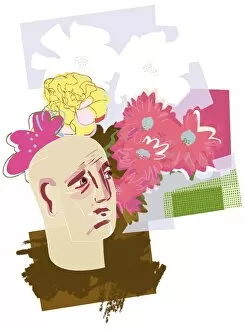Allergens Collection
"Allergens: Unseen Culprits That Trigger Our Immune System" Did you know that even the tiniest creatures can cause big trouble for our health
All Professionally Made to Order for Quick Shipping
"Allergens: Unseen Culprits That Trigger Our Immune System" Did you know that even the tiniest creatures can cause big trouble for our health? Take a closer look through a scanning electron microscope (SEM), and you'll discover the world lurking around us. Ever heard of eyelash mite tails? Yes, those microscopic critters living on our lashes have tails. These minuscule pests may seem harmless, but their presence can lead to itchy eyes and allergic reactions. But wait, there's more. Honey bees (Apis mellifera) play a vital role in pollination, yet their honey is not always sweet news for everyone. Some individuals are highly allergic to bee stings or even honey itself – an unfortunate consequence of these industrious insects' work. If you think allergens only affect your respiratory system, think again. Trachea-dwelling they are trigger coughing fits and breathing difficulties as they irritate this crucial airway passage. Now let's zoom in on dust mites - tiny arachnids invisible to the naked eye but ever-present in our homes. SEM images reveal their grotesque appearance up close, reminding us why they are such potent allergy triggers. Don't be fooled by their size; these little creatures pack quite a punch. Speaking of household dust, SEM shows us its true composition – a mix of skin flakes, pet dander, pollen grains from outside visitors like plants and trees – all potential sources of allergies within our own four walls. Ah yes, pollen grains - beautiful artwork under the microscope lens but capable of causing sneezing fits and watery eyes for many during allergy season. Nature's way of spreading life becomes an annoyance for some unlucky souls. Whether it's eyelash mite tails tickling your lids or dust mites making themselves at home in your mattress fibers - allergens surround us.














